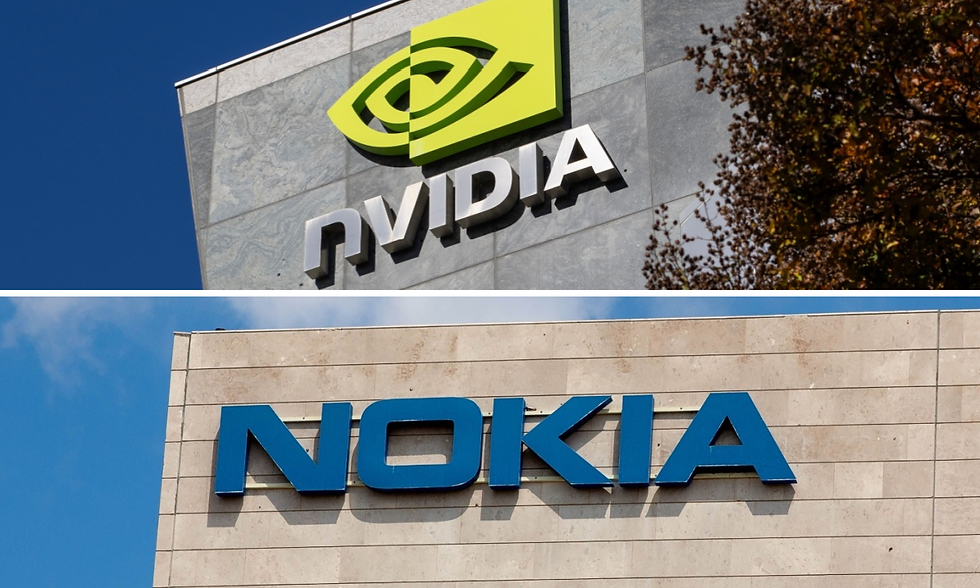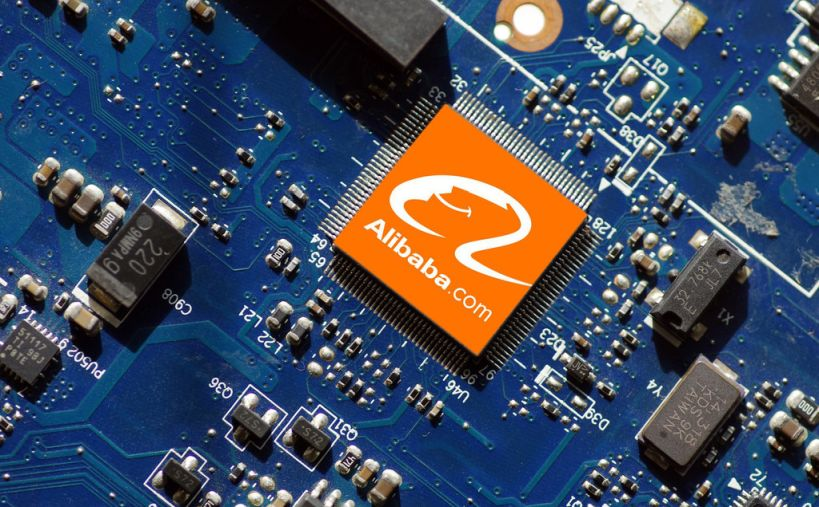Nvidia Invests in Nokia: Inside the $1B 6G AI-RAN Partnership
- Olivia Johnson

- Oct 29
- 7 min read

The technology world was jolted by a blockbuster announcement: Nvidia, the undisputed king of AI silicon, is investing a staggering $1 billion into telecom giant Nokia. The news sent Nokia's stock soaring by 22% and ignited a firestorm of discussion, from Wall Street trading floors to Reddit forums. But this is far more than a simple financial transaction. It's a deeply strategic alliance forged to build the very foundation of our connected future—AI-native 6G networks.
This partnership unites Nvidia's unparalleled dominance in accelerated computing with Nokia's vast global footprint in telecommunications infrastructure. Together, they aim to pioneer Artificial Intelligence Radio Access Network (AI-RAN) technology, a revolutionary approach that promises to transform mobile networks into intelligent, distributed AI factories. This article provides a comprehensive analysis of the deal, dissecting the technology, the market implications, the geopolitical undercurrents, and the pressing questions about a potential AI bubble.
A Landmark Deal: The Strategic Alliance Between Nvidia and Nokia
The collaboration between Nvidia and Nokia is a pivotal moment for the telecommunications industry, signaling a fundamental shift in how next-generation networks will be designed and deployed. It's a union of a processing powerhouse and an infrastructure titan, with ambitions that extend far beyond quarterly earnings.
The $1 Billion Catalyst: More Than Just an Investment
At its core, the deal involves Nvidia acquiring over 166 million new shares in Nokia for $1 billion, representing a stake of nearly 2.9%. While the financial injection is significant for Nokia—earmarked for AI development and other corporate purposes—the true value lies in the strategic partnership it solidifies. This isn't just passive capital; it's active collaboration. Nvidia CEO Jensen Huang and Nokia CEO Justin Hotard have framed this as a co-development effort to redefine the network edge. For Nvidia, it's a strategic move to cement its central role in the AI ecosystem by embedding its technology directly into the world's communication fabric. For Nokia, it's a powerful endorsement and a technological leap forward, arming it with best-in-class AI capabilities to compete in the 5G-Advanced and 6G eras.
Reclaiming Telecom Leadership: The Geopolitical Angle
A key narrative highlighted by both companies is the ambition to help the United States and its allies regain global leadership in critical telecommunications infrastructure. For years, companies like Huawei have dominated the RAN market, raising geopolitical and security concerns in Western nations. By creating a powerful, American-Finnish alternative built on cutting-edge AI, Nvidia and Nokia are positioning their solution as a strategic national asset. Jensen Huang has explicitly stated that AI will give the U.S. an "advantage again" in telecommunications. This partnership isn't happening in a vacuum; it's supported by an innovation-friendly environment in the U.S. that prioritizes technological leadership, especially in foundational sectors like 6G.
The Technology at the Core: AI-RAN and the Dawn of 6G

To understand the magnitude of this partnership, one must grasp the technological revolution at its heart: AI-RAN. This isn't an incremental upgrade but a complete reimagining of the radio access network.
What is AI-RAN and Why Does It Matter?
Traditionally, radio access networks (RAN) have focused purely on one thing: connectivity. They are the base stations and antennas that connect your phone to the network. AI-RAN fundamentally changes this by merging high-performance connectivity with powerful AI computation directly at the network edge. Instead of a "dumb pipe," the base station becomes an intelligent node capable of running complex AI applications locally.
This integration is crucial for two reasons. First, it dramatically improves network performance and efficiency. AI algorithms can optimize radio signals, manage spectrum usage, and enhance energy efficiency in real-time. Second, it unlocks a new world of latency-sensitive services that are impossible with cloud-based AI alone. Think real-time augmented reality glasses, autonomous drone fleets, smart factories with robotic automation, and connected vehicles that need to make split-second decisions. By bringing the AI data center "into everyone's pocket," as Nokia's CEO put it, AI-RAN builds the infrastructure for these future applications.
Inside the Tech Stack: Nvidia's ARC-Pro and Nokia's anyRAN
The partnership leverages specific technologies from each company to create a cohesive platform.
Nvidia ARC-Pro:At the center of Nvidia's offering is the Aerial RAN Computer Pro (ARC-Pro). This is a 6G-ready accelerated computing platform that integrates connectivity, computation, and sensing. Built on Nvidia's powerful Grace CPUs and next-gen Blackwell GPUs, and programmable via its ubiquitous CUDA platform, ARC-Pro provides the raw power needed for AI-RAN.
Nokia's anyRAN and AirScale:Nokia brings its deep telecom expertise to the table. Its anyRAN approach is a software-defined framework that allows for flexible deployment across Cloud RAN and dedicated RAN environments. Nokia will adapt its 5G and 6G RAN software to run on the Nvidia CUDA platform and embed the ARC-Pro into the core of its new AI-RAN solutions, effectively supercharging its widely deployed AirScale baseband platform. This ensures a seamless transition path for its massive customer base of telecom operators.
Ecosystem Support:The alliance is further strengthened by other industry leaders. Dell Technologies is providing its PowerEdge servers as the underlying computing platform for the Nokia AI-RAN solution, while T-Mobile has committed to testing and validating the technology in the field starting in 2026, lending crucial real-world credibility.
Market Reaction and Industry Impact
The announcement was met with immediate and dramatic market enthusiasm, but its true impact will be measured by industry adoption and the tangible value it creates over the coming years.
Wall Street Cheers: Nokia's Stock Soars
The most immediate and visible reaction was the 22% surge in Nokia's share price. For a legacy company that many still mistakenly associate with its defunct mobile phone business, this was a powerful market validation of its modern identity as a core player in telecommunications infrastructure. The $1 billion investment from a market darling like Nvidia acted as a massive vote of confidence, signaling to investors that Nokia's technology and market position are critical to the future of AI and 6G.
T-Mobile Joins the Fray: Early Adoption and Validation
The involvement of T-Mobile, a leading U.S. carrier, is a critical piece of the puzzle. A new technology platform can have the most impressive specifications on paper, but it means little without a major customer willing to deploy and test it. T-Mobile has announced it will collaborate with Nokia and Nvidia to begin field evaluations and testing of the advanced AI-RAN technology starting in 2026. This provides a clear path from a press release to a live network, giving other potential customers the confidence to invest in the ecosystem.
The Road Ahead: Commercialization and Future Outlook

From Lab to Live Network: The 2026-2027 Timeline
The technology has already been demonstrated at events like Nvidia's GTC conference. The next major milestone is customer trials, set to begin in early 2026 with partners like T-Mobile. Following successful validation and testing, the partners are targeting 2027 for full commercial production. This aggressive timeline reflects the urgency to build out next-generation infrastructure and capitalize on the AI wave.
The Software-Defined Future: A New Paradigm for Telecom
One of the most profound changes this partnership introduces is the shift to a software-defined model for network evolution. In the past, upgrading network capabilities often required costly and complex "rip-and-replace" hardware cycles. The AI-RAN model, built on programmable Nvidia silicon, allows for significant upgrades to be delivered via software updates. This dramatically increases the speed of innovation. As new AI algorithms are developed or 6G standards evolve, operators can deploy them rapidly without swapping out physical equipment.
Conclusion
The Nvidia-Nokia partnership is far more than a $1 billion headline. It is a calculated, strategic, and deeply technical endeavor to construct the backbone of the 6G era. By merging Nvidia's AI processing prowess with Nokia's telecom infrastructure expertise, the alliance is creating a new category of technology—AI-RAN—that promises to make our mobile networks smarter, faster, and more capable than ever before.
While legitimate questions about market bubbles and execution risk remain, the vision is compelling. It's a future where connectivity and computation are one, where AI services are delivered instantaneously from the edge, and where the telecommunications industry evolves from a simple utility into a dynamic engine of innovation. This partnership isn't just about the next "G"; it's about defining the intelligent, connected world that will be built upon it.
Frequently Asked Questions (FAQ)

1. What exactly is the Nvidia ARC-Pro platform?
The Nvidia ARC-Pro (Aerial RAN Computer Pro) is a 6G-ready accelerated computing platform designed specifically for AI-RAN. It combines Nvidia's Grace CPUs and Blackwell GPUs to provide the high-performance computation needed to run both wireless communication and AI workloads on the same hardware, programmable via the Nvidia CUDA platform.
2. How does this partnership help the US in the global telecom race?
The alliance creates a powerful Western alternative to competitors like Huawei in the 5G and 6G infrastructure market. By combining leading-edge American AI technology (Nvidia) with a trusted global telecom provider (Nokia), it aims to establish a new standard for AI-native networks, positioning the U.S. and its allies at the forefront of telecommunications innovation.
3. What are the main concerns about this Nvidia-Nokia deal creating an "AI bubble"?
Skeptics worry that this represents a "circular economy," where Nvidia invests in companies primarily so they will use the funds to purchase Nvidia's products, artificially inflating sales and market valuations. The concern is that if the projected demand for AI services doesn't materialize, these massive infrastructure investments could lead to a significant market correction.
4. Why is T-Mobile's involvement significant for the AI-RAN project?
T-Mobile's commitment to test and validate the AI-RAN technology in 2026 provides crucial real-world proof for the platform. As a major U.S. carrier, its participation signals market confidence and moves the project from a concept to a commercially viable solution, encouraging other operators to consider adoption.
5. What is the difference between Nokia's current business and its old mobile phone division?
While many remember Nokia for its iconic mobile phones, the company sold that business to Microsoft years ago. Today's Nokia is a completely different entity focused on telecommunications infrastructure. It is a leading global provider of network equipment, software, and services for telecom operators, building the core of 5G and future 6G networks.
6. How will AI-RAN benefit end-users and businesses?
For end-users, AI-RAN will enable seamless, high-performance experiences for future applications like AR/VR glasses and AI-native devices. For businesses, it unlocks new capabilities like industrial automation, robotics, and autonomous vehicles by providing the ultra-low-latency AI processing at the network edge required for real-time decision-making.
7. What is the projected timeline for seeing 6G networks powered by this technology?
Following demonstrations and initial development, customer trials with partners like T-Mobile are scheduled to begin in early 2026. The companies are targeting 2027 for the start of full-scale commercial production and deployment of their AI-RAN solutions.


